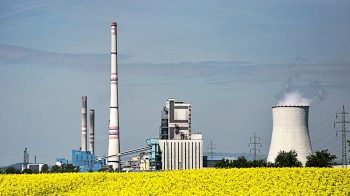The biopesticides market refers to the sector that deals with the production, distribution, and utilization of biopesticides. Biopesticides are derived from natural materials such as animals, plants, bacteria, and certain minerals. They are used for controlling pests, including insects, weeds, and diseases, in agriculture, forestry, and public health.
The demand for biopesticides has been steadily increasing in recent years due to several factors. One of the main drivers is the growing concern over the negative impacts of synthetic chemical pesticides on human health and the environment. Biopesticides are considered a safer alternative as they generally have lower toxicity levels and break down more quickly, resulting in reduced residual effects.
Additionally, stricter regulations and bans on certain synthetic pesticides in many countries have led to the adoption of biopesticides as an alternative pest management solution. The shift towards organic farming practices and the increasing consumer demand for pesticide-free and environmentally friendly products have also contributed to the growth of the biopesticides market.
Biopesticides offer several advantages over conventional chemical pesticides. They are target-specific, meaning they affect only the intended pest while sparing beneficial organisms like pollinators and natural predators. They often have a shorter pre-harvest interval, allowing farmers to harvest their crops sooner after application. Moreover, they can be integrated with other pest management strategies, such as biological control, to enhance overall efficacy.
Biopesticides serve as alternatives to chemical pesticides by offering a more sustainable and environmentally friendly approach to pest management. Some ways in which biopesticides differ from chemical pesticides:
- Source and Composition: Biopesticides are derived from natural materials such as plants, animals, bacteria, and minerals. They utilize naturally occurring substances or organisms to control pests. In contrast, chemical pesticides are typically synthetic compounds that are chemically formulated to kill or repel pests.
- Mode of Action: Biopesticides often have specific modes of action that target pests while minimizing harm to beneficial organisms. They may work by disrupting the pest’s life cycle, inhibiting feeding or reproduction, or acting as repellents. Chemical pesticides, on the other hand, generally have a broader spectrum of activity and can affect a wider range of pests, including beneficial organisms.
- Environmental Impact: Biopesticides are considered more environmentally friendly because they have lower toxicity levels and generally pose fewer risks to non-target organisms, including humans, wildlife, and beneficial insects like bees. They are designed to break down more quickly, reducing the persistence of pesticide residues in the environment. Chemical pesticides, especially those with long residual effects, can accumulate in soil, water, and food, leading to potential ecological and health concerns.
- Regulation and Safety: The regulatory requirements for biopesticides are often more favorable compared to chemical pesticides. Biopesticides typically undergo rigorous testing for safety and efficacy, but they generally have fewer restrictions and lower environmental impact thresholds. This allows for easier registration and use in various agricultural systems.
- Resistance Management: Over time, pests can develop resistance to chemical pesticides, rendering them less effective. Biopesticides offer an alternative approach to pest management that can help mitigate resistance development. By utilizing different modes of action and employing naturally occurring organisms or substances, biopesticides can provide an effective tool for integrated pest management strategies.
- Organic Farming and Market Demand: Biopesticides align well with organic farming practices, which prohibit the use of synthetic chemicals. The growing consumer demand for organic and pesticide-free products has increased the adoption of biopesticides as an essential component of sustainable agriculture.
North America dominated the biopesticides market, with a value of USD 2,262.9 million in 2022; it is projected to reach USD 4,715.2 million by 2027, at a CAGR of 15.8% during the forecast period.
North America accounted for a market share of around 41.3% in the global market, in 2022. The North American countries in the biopesticides market considered for the study include US, Canada, and Mexico. The loss of conventional products to registration or product performance issues is one of the key reasons driving the adoption of the market. Many key companies such as FMC Corporation and Marrone Bio Innovations are focusing on research for product development with better active ingredients.
In terms of the end-use application industry, there is no stand-out trend. However, foliar sprays are projected to witness the fastest growth.
Key Market Players
The key players in this market include BASF SE (Germany), Bayer AG (Germany), Syngenta AG (Switzerland), and UPL Limited (India).
